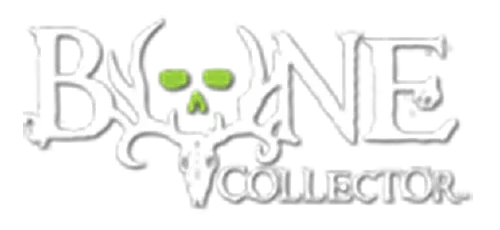DIY Hunting Arrows: Why Building Your Own Archery Hunting Setup is the Key to Success this Fall
If American football is a game of inches, archery hunting with a compound bow is one of grains. In both cases though, the details matter and the smallest misstep – whether falling a step behind or out of formation on a well-practiced play on the turf or adding too much epoxy to a too-short insert that had no hope of holding – can change the course of your hunt (or the outcome of the game) in just the fraction of a moment. Like a ball that’s sent down field, an arrow once released, is one you cannot get back. So, archery hunters owe it to the big-game animals they’re hunting to make sure those arrows are built to not only withstand the force of release, impact of meeting with the animal’s body, and devastation of a pass-through, but to also do their job quickly and ethically – bringing the critter down while ensuring as little suffering as possible.
So, if archery hunting is one of your favorite fall pursuits, and splitting hairs and pursuing perfection are a few of you “things,” why not give building your own hunting arrows a go? The ultimate outcome is complete control over the specifications and quality of the arrows you shoot and thus, your setup will be tailored perfectly to suit your preferences and shooting style.
To help you out, the Brotherhood team delved deep into their own DIY hunting arrow building processes – from purchasing all the right components to building their ultimate bow hunting archery setups – creating two informative how-to videos to guide you through doing this same this fall. And who better to learn from than two of the best and most experienced in the biz, Michael Waddell and T-Bone, #amirite?
The best part of hunting, bow hunting most of all? Waddell helps reveal the true beauty is that anybody can do it. “Nobody knows it all,” he says. “With hunting and with learning to hunt, you have a lot of failure. You have a lot of opportunities to see what works and you have the chance to see what doesn’t work.” While the videos below have specific gear mentioned, no build or setup has to match or follow strict guidelines to harvest game…there are too many gear combinations and variations to count that can harvest animals effectively. Take this advice as a starting point, and as mentioned above…succeed or fail and work from there!
Components and Considerations
First thing’s first. To start, you’ll need the basics – all the arrow components you plan to incorporate into your build. Regardless of your shooting style, preferences and plans for customizing your setup, every arrow will be comprised of these parts and pieces:
- Shafts These are the bare bones bodies of your arrows without any of the extras – no nocks, vanes, points or broadheads. They can be purchased from a pro shop or outdoor sporting goods store in a variety of weights and material constructions, and will also come full-length, meaning they will need cut to fit your unique draw specifications. Shaft weight determines energy and penetration after the arrow leaves your bow, with heavier options designed for maximum energy retention and lighter options designed for maintaining speed.We recommend going into your build with an idea of what you’re willing to spend. These bits and pieces will add up fast – especially if you’re looking for the best-of-the-best with the goal of building a world-class arrow no big-game critter will walk away from after being thwacked. Keep in mind, arrow shafts tend to be sorted based on straightness (the straighter a shaft is deemed, the more coin it’ll end up costing you) – preference – and spine stiffness – typically determined by your draw length and weight.
- Fletching As with shafts, potential fletching options are many and they vary widely in size and shape. If you’re wanting to get a little creative, this is a good place to do it.Do you prefer four vanes? Five? Six? Whichever it is, go for it.Do you prefer plastic vanes or feathers? Feathers are cool, but it’s totally up to you.And, once you’ve got them on, if you change your mind – no biggie. With a quick scrape the fletching will all come off and you can feel free to start over and give another style a try.
- Nocks Nocks are inserted into the same end of your arrow shaft the fletching adorns. Oftentimes, nocks come already installed in arrow shafts, but are sometimes loose, requiring you to fit, align and epoxy them yourself. In this case, you’re free to shop around for the ideal aftermarket product to further customize your build. Nocks can be illuminated – models that light up with the force of the bow string when released, making them easier to track in flight and locate afterward, as well as get a good picture of where (or if) you connected with the animal at all – or not, and come with different sized string grooves as well.
- Inserts At the opposite end of the arrow shaft, you’ll need to add the inserts that will allow fieldpoints and broadheads to be threaded on. Unlike nocks, these typically come loose with your arrows and require you to do the work of adhering them. If you want to get super technical, you can play around with materials – while inserts these days tend to be made of aluminum, you can also find them made from stainless steel – a good option if you’re looking to up both the weight of your arrows and your front of center balance point, or FOC.
- Field points and broadheads Not real imperative to the build itself, but once you have a small pile of homemade arrows that are ready to shoot, you’ll be itching to do just that. Make sure you have some field points and broadheads on hand so you can fling a few of your creations around once everything sets and dries.
The Build
Once you’ve checked all those boxes, do a quick assessment of your tool situation. What you’ll need in this department depends a whole lot on your confidence in the task you’re taking on and how detailed you plan to get with the arrow-building process. We suggest having tools like an arrow saw, fletching jig, squaring device, and epoxy (or other preferred adhesives) on hand to help you make things as precise as possible. Plus, make sure you’re packing a solid amount of patience, especially if this is your first go. Trust us, you’re gonna need it.
Now for the moment you’ve been waiting for – let the build begin.
You heard it from Michael, the Bone Collector founder himself – make your decisions and alter your build based on what works best for you. Again, there are many variations of gear and builds that will harvest animals effectively. After years and years of experience, T-Bone has preferences and the knowledge to back them up on his arrow build. This is the best all-around arrow he can build for his setup and preferences. Consider these as some helpful guidelines when deciding what gear you end up throwing together for your build.
Like everything homemade, we bet you find these custom-built arrows just hit a little different. Good luck this season, y’all!




